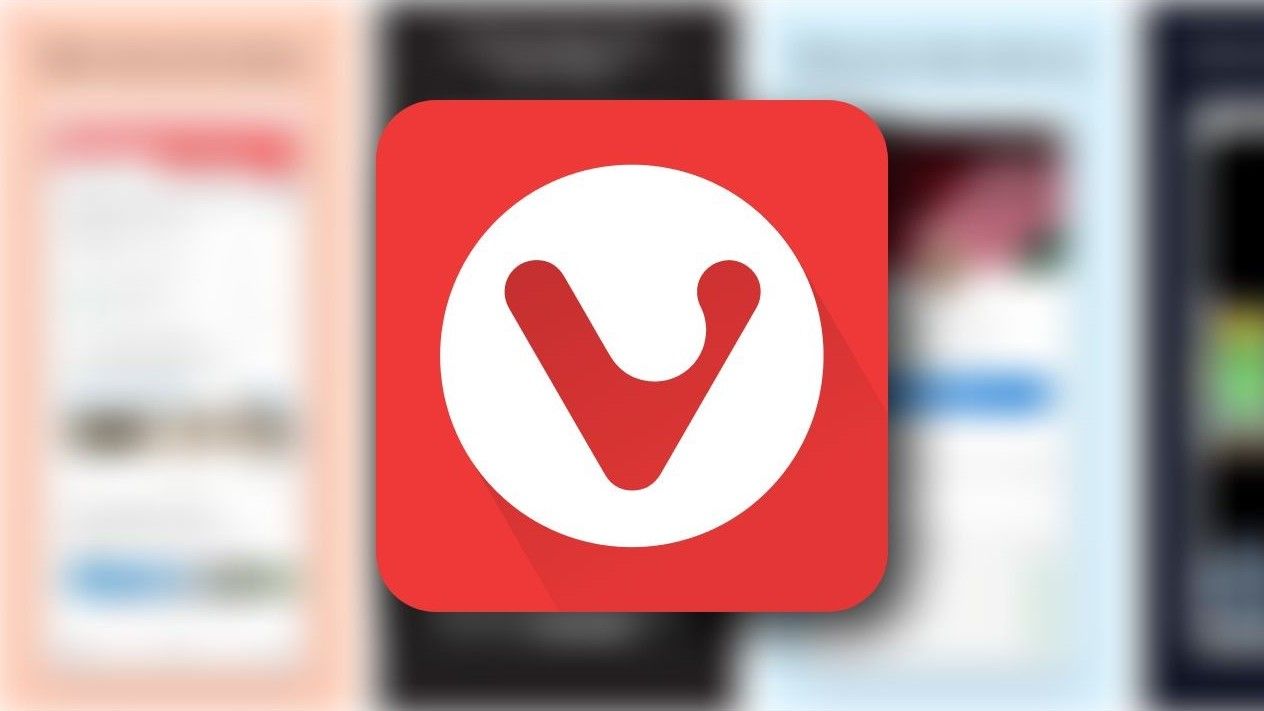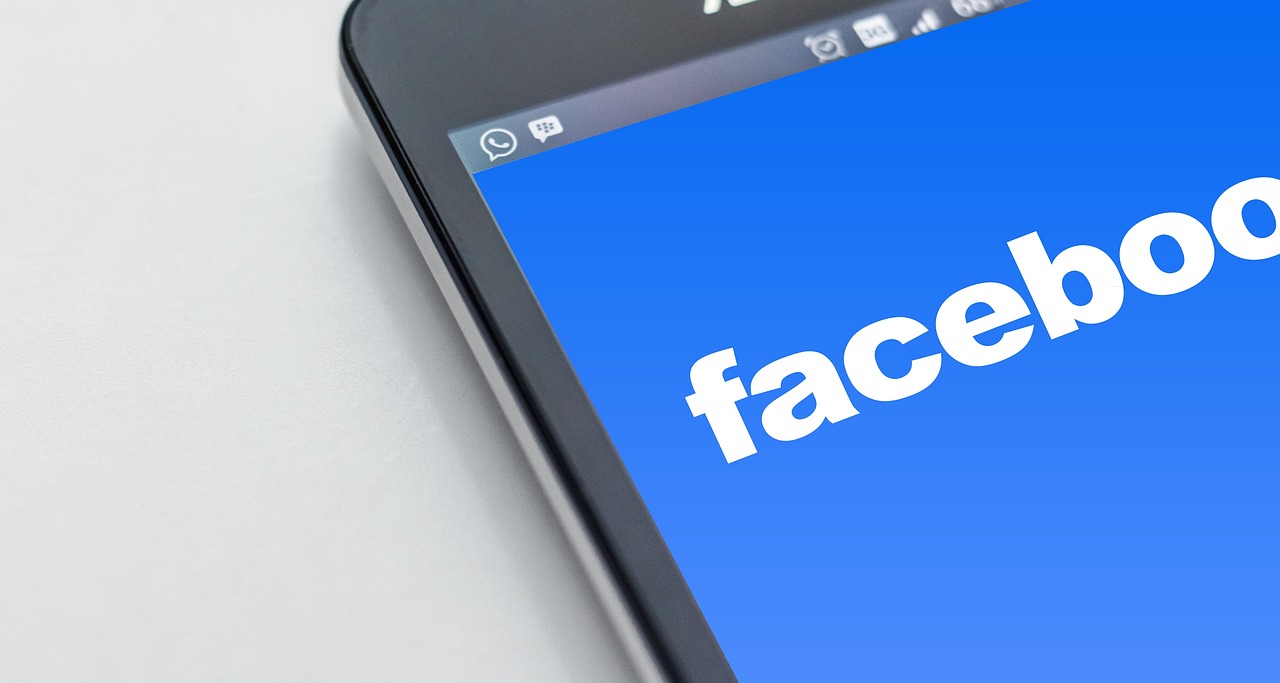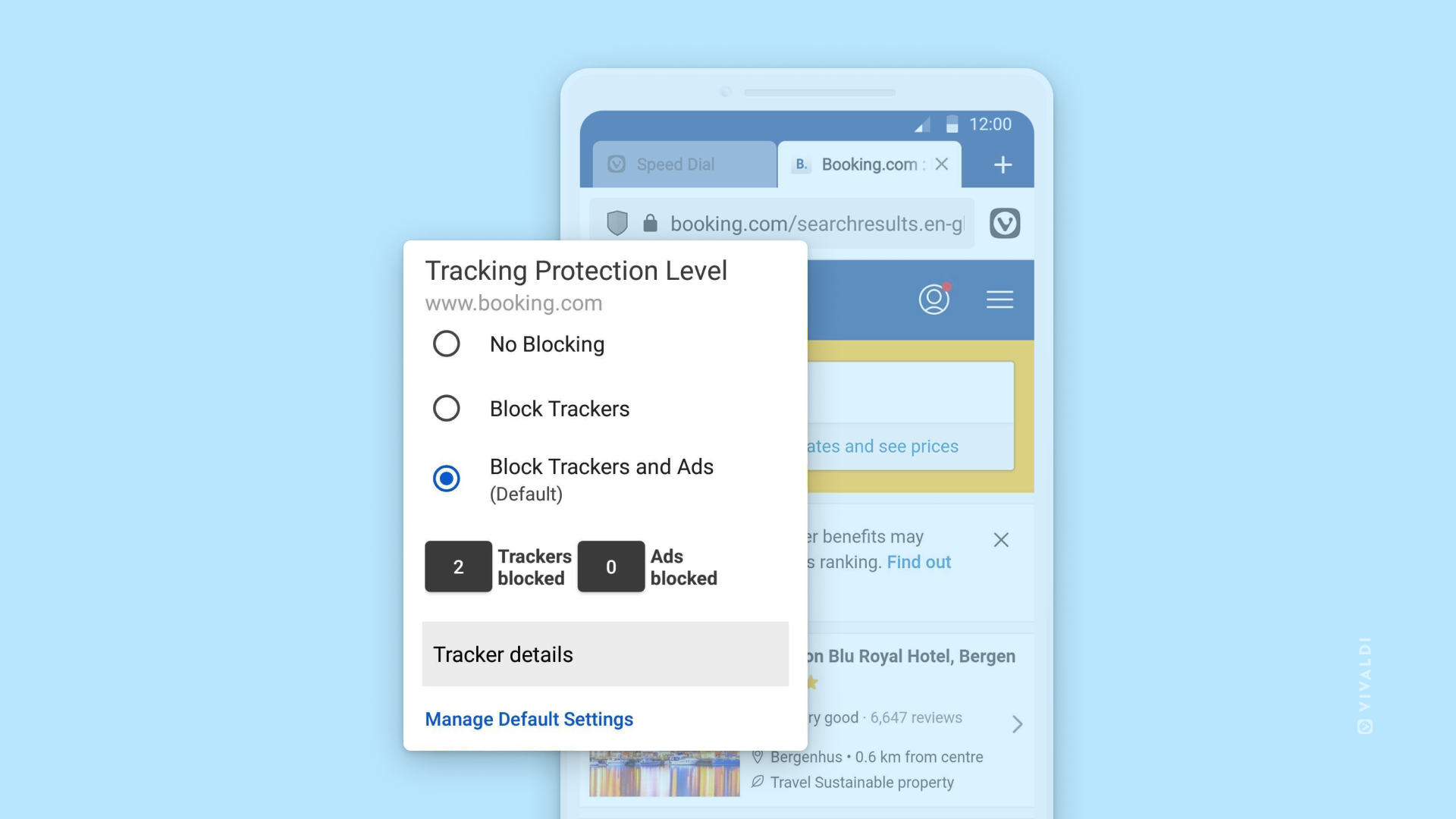Vivaldi Browser CEO wants to fix web advertising

Vivaldi is one of our favorite browsers, and for good reason. It’s filled to the brim not just with customization options and features that help enhance your web browsing experience, but it also has a built-in tracking blocker that works to limit advertisers from following you around the web everywhere you go. While that sort of thing’s a standard feature on many browsers today, in Vivaldi’s case, there’s more to it. Vivaldi’s CEO Jon Stephenson von Tetzchner, whom we sat down with after MWC 2023, doesn’t believe in the attention- and tracking-based advertising world we live in today, and is advocating for a radical renaissance that shifts us to a broad and content-based approach, like we’re familiar with from print and TV.
To start with a little excursion, Jon explains to us that the internet wasn’t always the attention-based advertising machine that we know it to be today. This trend supposedly really only started when Facebook went public in 2012 and started to focus on the interests of shareholders. The company was then forced to keep users on the platform as long as possible and monetize their interactions, leading to the redesign of the Facebook feed to be less focused on people you know, and more focused on supposedly interesting content.
This approach meant that publishers could suddenly compete against each other on the same platform, leading to an influx of click-optimized headlines and less money to be distributed among websites overall. Facebook’s success with this model also quickly drove other platforms to copy the approach, like Twitter, which has for a long time tried to push its algorithmic-based feed onto users, rather than the beloved chronological timeline.
In turn, this led to the advent of poor-quality, high-quantity ads that advertisers effectively have less control over than programmatic ads in newspapers and such. They have no idea on which websites they will end up, and it’s likely that no one is truly happy with the way the system is set up right now. Publishers moving to paywalls further proves that the current ad system is broken, Jon says. 10 to 15 years ago, almost all content was freely available on the web, with ads that you weren’t necessarily afraid of. This has changed today, and paywalls are a symptom that shows that targeted ads are worse, less efficient, and bring less revenue than the older approach.
Vivaldi wants to offer an escape from the targeting-based internet
Vivaldi doesn’t believe in this attention-based model, Jon explains. The browser wants to actively offer alternatives to such efforts that attempt to lock you in to a service as long as possible. The browser offers a built-in RSS feed reader that you can curate yourself and that is strictly chronological by nature, and other services like Vivaldi Mail and Calendar can either be used with Vivaldi accounts, or you can hook into them with your own existing IMAP services.
Vivaldi also doesn’t believe in collecting user data, and is actively helping its users block trackers. The browser has a built-in ad blocker, even if Jon isn’t too happy about it — he would have preferred to stick with a tracking blocker, which would be an incentive for websites and social media to create privacy-minding ads instead, but Vivaldi users were asking for the inclusion. This is also one of the things that Jon says sets Vivaldi apart from the competition. He says the browser can be thought of as a product built by and for friends, and thus, compromises have to be made.
In contrast to ad blocker AdBlock Plus, or Vivaldi’s competing browser, Brave, the company doesn’t want to take matters into its own hands, though. AdBlock Plus has an “acceptable ads” program built into its extension by default, which allows partner websites to add unobtrusive ads on their websites, with all the usual tracking enabled. Brave, on the other hand, blocks all advertising and tracking by default, but you can optionally opt in to receive ads in your desktop or phone notifications. This earns you tokens in Brave’s cryptocurrency, which you can either use for your own gain or distribute to the websites you’ve visited as an alternative payment for blocking their ads.
Both of these approaches are opt-in for content creators, though, meaning that if publishers don’t agree with the terms set by these custom systems created by companies that effectively block their main revenue stream, they don’t get a dime anymore.
Vivaldi is bringing the fight for a better internet straight to the regulators
What Jon wants to do instead is advocate to regulators (he doesn’t want to call what he does lobbying), and when we met, he was en-route to Brussels to talk to EU representatives. He envisions a world where tracking-based advertising is banned, with publishers instead going back to the way advertising worked before the internet, as you know them from newspapers, magazines, or TV. Rather than having ads be based on users’ interests, they would be more programmatic and based on broader target audiences, or the content they’re paired with.
The benefit with this approach is that there isn’t necessarily less money in it for publishers than in tracking-based advertising. Jon says that advertisers have advertising budgets, and when they can’t use this money for tracking-based ads because these are banned, they would instead use them for content-targeted ads. If you ask us, this is similar to how advertising works on television already, with a rough target audience in mind for certain programming. And if you’re aware of Super Bowl ad prices, you can clearly see that there is enough money in this form of advertising (though of course, the Super Bowl is one of the most viewed TV events annually, so that might not be the best example).
Google’s Privacy Sandbox isn’t a viable alternative
On the surface, Google may have something similar in mind with its upcoming Privacy Sandbox that tracks users locally only, and then organizes them by shared interests, making them less trackable as individuals. But as Jon told our sister site XDA, who also spoke to him during MWC 2023, this still doesn’t remove the tracking issue — it just relocates it from servers to the browser.
Vivaldi can’t single-handedly change the way the internet is set up today, but the company can do its part. Its user-centric, privacy-minding approach to a web browser can provide you with an idea of what the internet could be like without tracking, and that’s more than what can be said for many competitors.
Facebook Faces Yet Another Outage: Platform Encounters Technical Issues Again

Uppdated: It seems that today’s issues with Facebook haven’t affected as many users as the last time. A smaller group of people appears to be impacted this time around, which is a relief compared to the larger incident before. Nevertheless, it’s still frustrating for those affected, and hopefully, the issues will be resolved soon by the Facebook team.
Facebook had another problem today (March 20, 2024). According to Downdetector, a website that shows when other websites are not working, many people had trouble using Facebook.
This isn’t the first time Facebook has had issues. Just a little while ago, there was another problem that stopped people from using the site. Today, when people tried to use Facebook, it didn’t work like it should. People couldn’t see their friends’ posts, and sometimes the website wouldn’t even load.
Downdetector, which watches out for problems on websites, showed that lots of people were having trouble with Facebook. People from all over the world said they couldn’t use the site, and they were not happy about it.
When websites like Facebook have problems, it affects a lot of people. It’s not just about not being able to see posts or chat with friends. It can also impact businesses that use Facebook to reach customers.
Since Facebook owns Messenger and Instagram, the problems with Facebook also meant that people had trouble using these apps. It made the situation even more frustrating for many users, who rely on these apps to stay connected with others.
During this recent problem, one thing is obvious: the internet is always changing, and even big websites like Facebook can have problems. While people wait for Facebook to fix the issue, it shows us how easily things online can go wrong. It’s a good reminder that we should have backup plans for staying connected online, just in case something like this happens again.
Christian family goes in hiding after being cleared of blasphemy

LAHORE, Pakistan — A court in Pakistan granted bail to a Christian falsely charged with blasphemy, but he and his family have separated and gone into hiding amid threats to their lives, sources said.
Haroon Shahzad, 45, was released from Sargodha District Jail on Nov. 15, said his attorney, Aneeqa Maria. Shahzad was charged with blasphemy on June 30 after posting Bible verses on Facebook that infuriated Muslims, causing dozens of Christian families in Chak 49 Shumaali, near Sargodha in Punjab Province, to flee their homes.
Lahore High Court Judge Ali Baqir Najfi granted bail on Nov. 6, but the decision and his release on Nov. 15 were not made public until now due to security fears for his life, Maria said.
Shahzad told Morning Star News by telephone from an undisclosed location that the false accusation has changed his family’s lives forever.
“My family has been on the run from the time I was implicated in this false charge and arrested by the police under mob pressure,” Shahzad told Morning Star News. “My eldest daughter had just started her second year in college, but it’s been more than four months now that she hasn’t been able to return to her institution. My other children are also unable to resume their education as my family is compelled to change their location after 15-20 days as a security precaution.”
Though he was not tortured during incarceration, he said, the pain of being away from his family and thinking about their well-being and safety gave him countless sleepless nights.
“All of this is due to the fact that the complainant, Imran Ladhar, has widely shared my photo on social media and declared me liable for death for alleged blasphemy,” he said in a choked voice. “As soon as Ladhar heard about my bail, he and his accomplices started gathering people in the village and incited them against me and my family. He’s trying his best to ensure that we are never able to go back to the village.”
Shahzad has met with his family only once since his release on bail, and they are unable to return to their village in the foreseeable future, he said.
“We are not together,” he told Morning Star News. “They are living at a relative’s house while I’m taking refuge elsewhere. I don’t know when this agonizing situation will come to an end.”
The Christian said the complainant, said to be a member of Islamist extremist party Tehreek-e-Labbaik Pakistan and also allegedly connected with banned terrorist group Lashkar-e-Jhangvi, filed the charge because of a grudge. Shahzad said he and his family had obtained valuable government land and allotted it for construction of a church building, and Ladhar and others had filed multiple cases against the allotment and lost all of them after a four-year legal battle.
“Another probable reason for Ladhar’s jealousy could be that we were financially better off than most Christian families of the village,” he said. “I was running a successful paint business in Sargodha city, but that too has shut down due to this case.”
Regarding the social media post, Shahzad said he had no intention of hurting Muslim sentiments by sharing the biblical verse on his Facebook page.
“I posted the verse a week before Eid Al Adha [Feast of the Sacrifice] but I had no idea that it would be used to target me and my family,” he said. “In fact, when I came to know that Ladhar was provoking the villagers against me, I deleted the post and decided to meet the village elders to explain my position.”
The village elders were already influenced by Ladhar and refused to listen to him, Shahzad said.
“I was left with no option but to flee the village when I heard that Ladhar was amassing a mob to attack me,” he said.
Shahzad pleaded with government authorities for justice, saying he should not be punished for sharing a verse from the Bible that in no way constituted blasphemy.
Similar to other cases
Shahzad’s attorney, Maria, told Morning Star News that events in Shahzad’s case were similar to other blasphemy cases filed against Christians.
“Defective investigation, mala fide on the part of the police and complainant, violent protests against the accused persons and threats to them and their families, forcing their displacement from their ancestral areas, have become hallmarks of all blasphemy allegations in Pakistan,” said Maria, head of The Voice Society, a Christian paralegal organization.
She said that the case filed against Shahzad was gross violation of Section 196 of the Criminal Procedure Code (CrPC), which states that police cannot register a case under the Section 295-A blasphemy statute against a private citizen without the approval of the provincial government or federal agencies.
Maria added that Shahzad and his family have continued to suffer even though there was no evidence of blasphemy.
“The social stigma attached with a blasphemy accusation will likely have a long-lasting impact on their lives, whereas his accuser, Imran Ladhar, would not have to face any consequence of his false accusation,” she said.
The judge who granted bail noted that Shahzad was charged with blasphemy under Section 295-A, which is a non-cognizable offense, and Section 298, which is bailable. The judge also noted that police had not submitted the forensic report of Shahzad’s cell phone and said evidence was required to prove that the social media was blasphemous, according to Maria.
Bail was set at 100,000 Pakistani rupees (US $350) and two personal sureties, and the judge ordered police to further investigate, she said.
Shahzad, a paint contractor, on June 29 posted on his Facebook page 1 Cor. 10:18-21 regarding food sacrificed to idols, as Muslims were beginning the four-day festival of Eid al-Adha, which involves slaughtering an animal and sharing the meat.
A Muslim villager took a screenshot of the post, sent it to local social media groups and accused Shahzad of likening Muslims to pagans and disrespecting the Abrahamic tradition of animal sacrifice.
Though Shahzad made no comment in the post, inflammatory or otherwise, the situation became tense after Friday prayers when announcements were made from mosque loudspeakers telling people to gather for a protest, family sources previously told Morning Star News.
Fearing violence as mobs grew in the village, most Christian families fled their homes, leaving everything behind.
In a bid to restore order, the police registered a case against Shahzad under Sections 295-A and 298. Section 295-A relates to “deliberate and malicious acts intended to outrage religious feelings of any class by insulting its religion or religious beliefs” and is punishable with imprisonment of up to 10 years and fine, or both. Section 298 prescribes up to one year in prison and a fine, or both, for hurting religious sentiments.
Pakistan ranked seventh on Open Doors’ 2023 World Watch List of the most difficult places to be a Christian, up from eighth the previous year.
Morning Star News is the only independent news service focusing exclusively on the persecution of Christians. The nonprofit’s mission is to provide complete, reliable, even-handed news in order to empower those in the free world to help persecuted Christians, and to encourage persecuted Christians by informing them that they are not alone in their suffering.
Free Religious Freedom Updates
Join thousands of others to get the FREEDOM POST newsletter for free, sent twice a week from The Christian Post.
Individual + Team Stats: Hornets vs. Timberwolves
CHARLOTTE HORNETS MINNESOTA TIMBERWOLVES You can follow us for future coverage by liking us on Facebook & following us on X: Facebook – All Hornets X – …
Source link
















